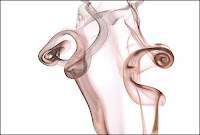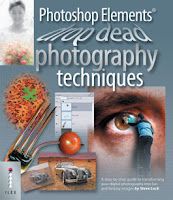-->How To Manage Digital Photography Lighting
By : Venita
Photography blends science with art. The photographer is the artist who engraves his creation with light and shade. Science has gifted the artist a technically advanced digital camera for him to captivate life with it. But he must know to decipher the codes of light
Natural light sources like the sun and the moon are considered the best light sources. These lights often invade indoors and make natural shots come alive. Men have created artificial lights like the ordinary bulb, the tungsten halogen lamp or the bright photoflood.
There are various types of lighting, the photographer can employ. The most common is the Directional lighting provided by flash, tungsten or several sources and can be used from the front, back or side.
Front lighting is the most in vogue but it reveals every detail. The light is at the back of the photographer beaming at the face of the subject highlighting every detail. This often results in an unexciting and flat look of your subjects. Another technique is to mystify your subject by lighting up from side. The main illumination from side adds interest and vigor with presence of dark shadows.
 In Back lighting the source light remains in the rear of the subject shining in the face of the camera. So, you must be very careful while using this mode otherwise the subject will appear like a silhouette. The main advantage here is, you will be able to capture the natural expressions of your subject in an outdoor shoot, as he will not squint facing bright light.
In Back lighting the source light remains in the rear of the subject shining in the face of the camera. So, you must be very careful while using this mode otherwise the subject will appear like a silhouette. The main advantage here is, you will be able to capture the natural expressions of your subject in an outdoor shoot, as he will not squint facing bright light.
You can employ Cross lighting where strong directional light comes from both sides. But this method is only suitable for studios with bright flash or tungsten lights.
Lighting For Digital Photography
Digital cameras may offer a wide range of easy lighting modes but there are challenges for the artist in his path to perfection. You must adopt the trial and error method and acquire the knowledge of lighting.
Most digital cameras have preset digital photography lighting modes or 'scenes' for different lighting situation. There is the indoor mode to click without flash, which is particularly useful in art galleries or museums, the night and portrait mode allows you to take pictures of your subject with a gleaming backdrop at night using a slower shutter speed.
 The digital cameras provide an automatic setting for white balancing .You can determine the baseline white in your image against which, other colors will be rendered. Your camera may have a histogram to evaluate exposure in different digital photography conditions. Most cameras have various options like daylight, cloudy, tungsten and more.
The digital cameras provide an automatic setting for white balancing .You can determine the baseline white in your image against which, other colors will be rendered. Your camera may have a histogram to evaluate exposure in different digital photography conditions. Most cameras have various options like daylight, cloudy, tungsten and more.
What Is Auxillary Lighting?
If you want to create art using light and shadow, the Flash unit alone is not enough. Here, auxiliary lighting comes in. If you decide to shoot portraits or product shots in a studio then auxiliary lighting is not optional but necessary.
For great results use head and kicker lights. Flashlights do not generate heat like floods and spots, so are more suited for portraits. Make sure the flash suits your digital camera. If you want to shoot still shots or product shots, continuous tungsten light is the cheapest and best. A range of wattage bulbs and reflectors will help you control the intensity and direction of light too.
If you don't have money you can rent lights. Top studios have various assortments of flash units, flood and spotlights.
How to use light
Light is made up of all colors. If seen through a prism it bursts into different colors. You are free to experiment with the rainbow. Artificial lights have their own characteristics. The photographer can utilize different light sources. You can alter white setting for a different effect. Most digital cameras have color setting modes to achieve accuracy of the colors.
Direction of light is important in digital photography. People look best in diffused sidelights and backlight produces a halo effect while overhead lighting produces sharp contrast of light and shadows. Strength of light is also an essential factor. You can have placid effect from diffused lighting and sharpness from strong light.
Indoor lighting gives you ample scope to shoot nice pictures. You can assemble light as per your choice and can even harness sunlight when it enters your house to soften your image.
Outdoor shots are more challenging. It leaves you at the mercy of Mother Nature. While landscape looks good in soft light, the wildlife is captivating with fine details in bright light. So photographers try to capture wildlife just before dusk or before dawn.
In digital cameras, you do not need to worry about ISO film speed. Most digital cameras have preset ISO setting. However, experimentation is the perfect way to curb imperfection. So inflame your imagination and hone your skill. You are ready to enter the luminous empire of photography.


